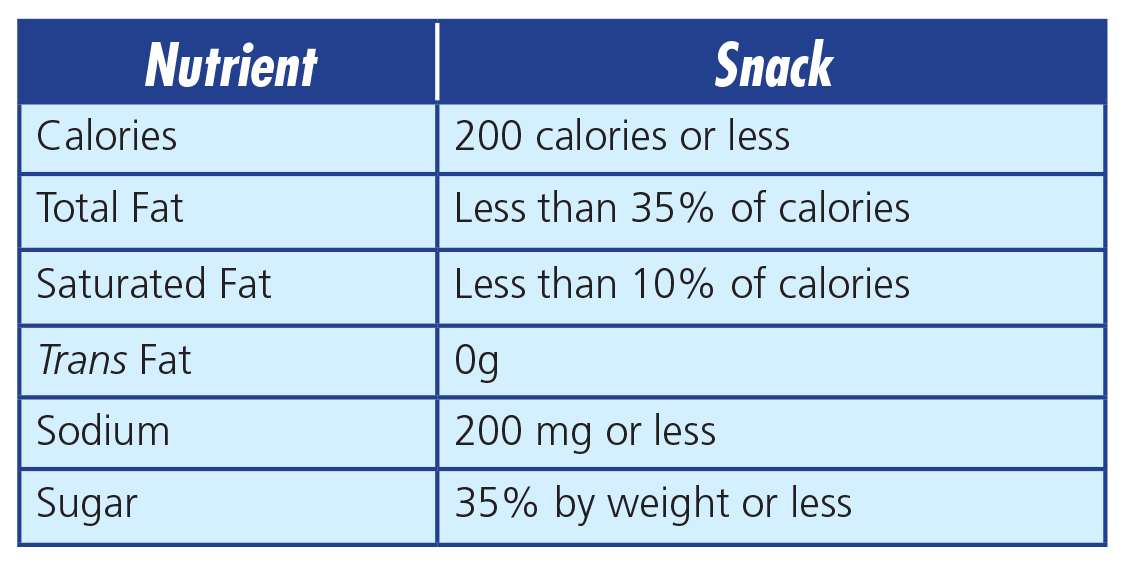Restaurants & Stores
Many people enjoy eating meals away from home or the convenience of carry-out food. Studies show that Americans consume a third of their daily calories from foods prepared outside of their homes at restaurants, fast food establishments, and other food venues. This can make it diffcult for families to eat healthy, nutritious meals. How often do you eat food prepared from a restaurant or other venue? Some restaurants now provide a great deal of information to help consumers make more healthy choices when eating out. Listing calories is required on certain restaurant menus and menu boards to help consumers choose healthier options. Menu labeling is required for restaurants and other similar retail food establishments that are a part of a chain of 20 or more locations and meet certain other criteria. Establishments that are covered by the menu labeling regulation are also required to have additional written nutrition information available upon consumer request. This menu labeling is consistent nationwide and provides easy-tounderstand nutrition information.
FDA requires restaurants to include a statement on menus and menu boards to remind consumers that “2,000 calories a day is used for general nutrition advice, but calorie needs vary.”
Why is reading calories on the menu important?
Your body needs nutrients to grow and develop. Many foods that are high in calories are high in saturated fats and/or Added Sugars. Whether you are trying to lose, gain, or maintain weight, the key is to balance the number of calories you consume with the number of calories your body uses (“burns”).
Where is calorie information located?
Calorie information is located clearly on menus and menu boards next to the name or the price of the food or beverage. For buffets and salad bars, calories are shown on signs that are visible when selecting the foods. Calories are not required to be listed for:
- Condiments that are available for general use (such as ketchup packets on the counter)
- Daily specials (such as a chef’s soup special)
- Custom orders (such as a burger with no bun)
- Temporary/seasonal menu items (such as eggnog-favored latte)
Combination Meals
- When combinations of more than one food item are listed together as a meal, such as a hamburger, fries, and a drink, and there are three or more options (e.g., more than three drink choices), the calories are shown as a range: for example, 400 - 750 calories.
- When there are only two choices of the variable component of that combination meal, such as fries or a side salad, the calories are displayed with a slash: for example, 150/200 calories.
Is there additional nutrition information? If so, where can it be found?
The additional written nutrition information must be available on the premises of those establishments that meet the criteria, and it must be provided to customers upon request. This information may be in the form of booklets or on computers (supplied by the establishment), counter cards, handouts, kiosks, posters, tray liners, or signs. The nutrition information may come from nutrient databases, cookbooks, laboratory analyses, or other similar means. The nutrition information must include:
- Total Calories
- Calories From Fat
- Total Fat
- Saturated Fat
- Trans Fat
- Cholesterol
- Sodium
- Total Carbohydrates
- Dietary Fiber
- Sugars
- Protein
Vending Machines
Sometimes when you are hungry or skip a meal, you might look for something quick, easy, and convenient. Vending machine snacks may be the answer—but are they good for us? Snacks make up more than one fourth of the daily calories consumed by tweens and teens. It’s important that those snacks are healthy.
Calorie information is required for vending machine operators who own or operate 20 or more vending machines. Vending machine operators who are not covered by the requirements can voluntarily register to be covered. Unless calories are already visible on the actual snack package before purchase, the calorie labeling may be shown on a:
- Sign
- Sticker
- Poster
- Small placard
- Electronic or digital display near the food item or selection button
The calories must be declared for the entire item as sold (not per serving). This includes vending machines that sell:
- Soft drinks
- Packaged snacks
- Hot-and-cold cup beverages
- Refrigerated prepared food (such as those sold from turnstile vending machines)
- Handfuls of nuts or candies (such as those sold from bulk vending machines)
Game machines (such as claw machines in arcades) are not covered, even if they sometimes dispense candy or other edible items as part of the game.
Smart Snacks in School
 All food and beverages sold in school vending machines during the school day must meet nutrition standards. The USDA Smart Snacks in School regulation applies to school foods sold à la carte, in the school store, and from vending machines. To qualify as a Smart Snack, a snack must frst meet the following general nutrition standards (from the regulation):
All food and beverages sold in school vending machines during the school day must meet nutrition standards. The USDA Smart Snacks in School regulation applies to school foods sold à la carte, in the school store, and from vending machines. To qualify as a Smart Snack, a snack must frst meet the following general nutrition standards (from the regulation):
- be a grain product that contains 50 percent or more whole grains by weight (be whole grain-rich/have a whole grain as the frst ingredient); or
- have as the frst ingredient a fruit, a vegetable, a dairy product, or a protein food; or
- be a combination food that contains at least ¼ cup of fruit and/or vegetable; and
- contain 10% of the Daily Value (DV) of one of the nutrients to get more of (calcium, potassium, iron, vitamin D, or dietary fber), and
- the food must meet the nutrient standards for calories, sodium, sugar, and fats.
 All food and beverages sold in school vending machines during the school day must meet nutrition standards. The USDA Smart Snacks in School regulation applies to school foods sold à la carte, in the school store, and from vending machines. To qualify as a Smart Snack, a snack must frst meet the following general nutrition standards (from the regulation):
All food and beverages sold in school vending machines during the school day must meet nutrition standards. The USDA Smart Snacks in School regulation applies to school foods sold à la carte, in the school store, and from vending machines. To qualify as a Smart Snack, a snack must frst meet the following general nutrition standards (from the regulation): Display the menus from various fast food restaurants around the room, and begin a conversation with these questions:
Display the menus from various fast food restaurants around the room, and begin a conversation with these questions: